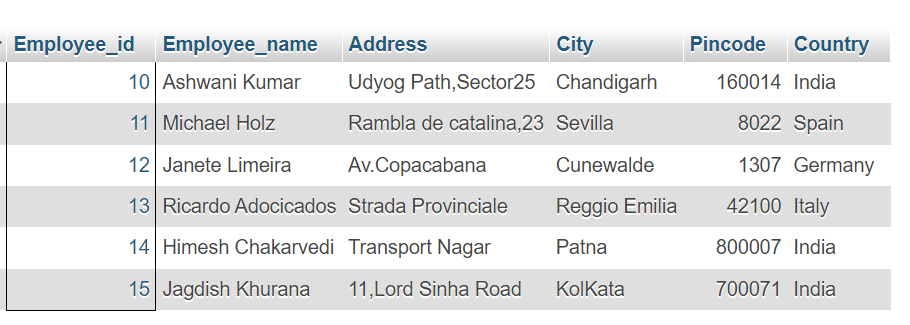The SQL IN Operator
The IN operator allows you to specify multiple values in a WHERE clause.
The IN operator is a shorthand for multiple OR conditions.
Example
Return all employee from 'Germany', 'Spain', or 'Italy': SELECT * FROM employee WHERE Country IN ( 'Germany' , 'Spain' , 'Italy' );You can click on above box to edit the code and run again.
Output
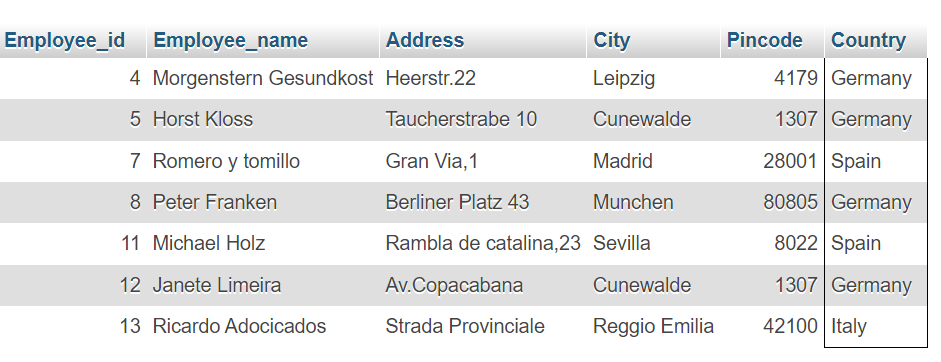
Syntax
SELECT column_name(s) FROM table_name WHERE column_name IN (value1, value2, ...);
Demo Employee table
This employee table is used for examples:
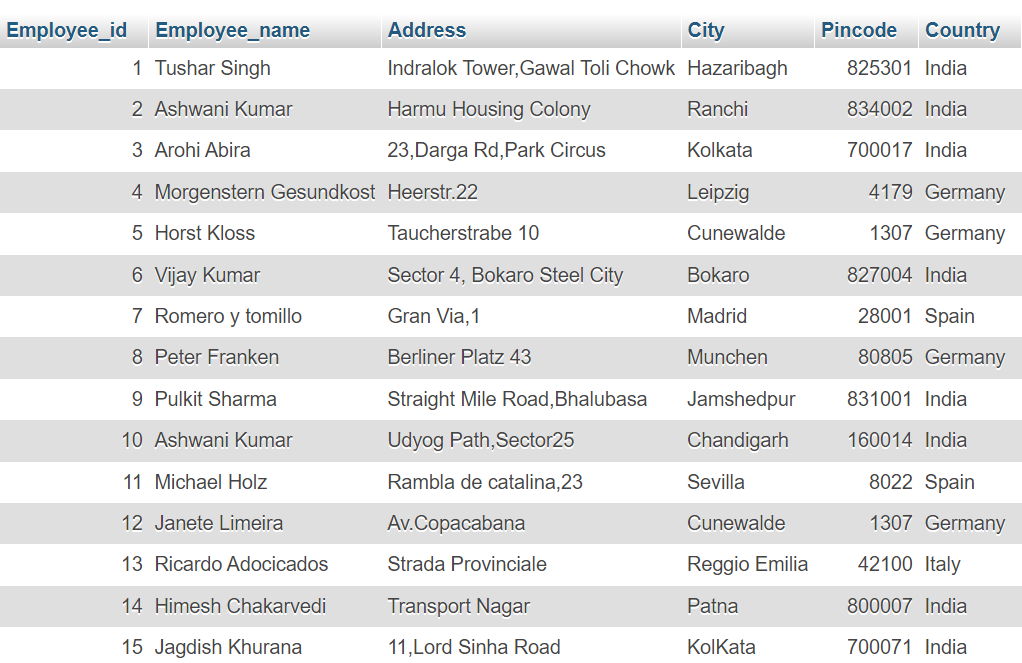
NOT IN
By using the NOT keyword in front of the IN operator, you return all records that are NOT any of the values in the list.
Syntax
Return all employee that are NOT from 'Germany', 'Spain', or 'Italy':You can click on above box to edit the code and run again.
SELECT* FROM employee
WHERE Country NOT IN ( 'Germany', 'Spain','Italy');
Output
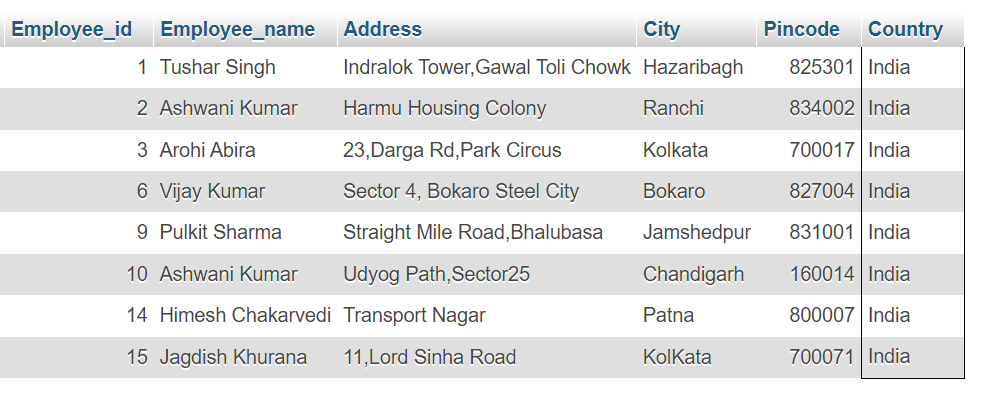
IN (SELECT)
You can also use IN with a subquery in the WHERE clause.
With a subquery you can return all records from the main query that are present in the result of the subquery.
Example
Return all employee that have an order in the products table:You can click on above box to edit the code and run again.
SELECT* FROM employee
WHERE Employee_id IN ( SELECT Employee_id FROM products);
Output
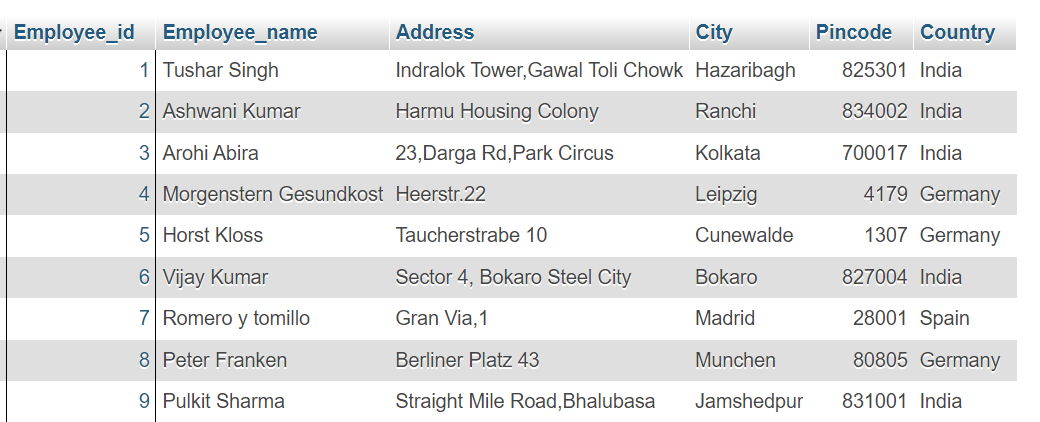
Demo Products table
This product table is used in examples:
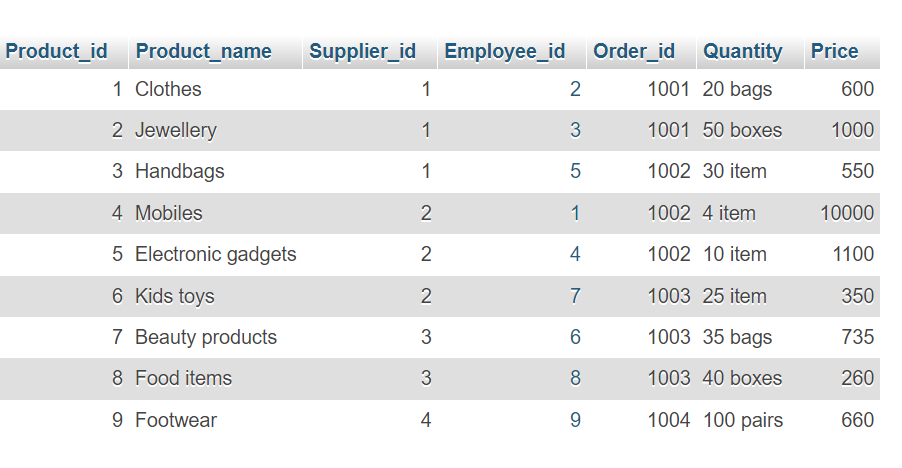
NOT IN (SELECT)
The result in the example above returned 9 records, that means that there are 6 employee that haven't placed any orders.
Let us check if that is correct, by using the NOT IN operator.

